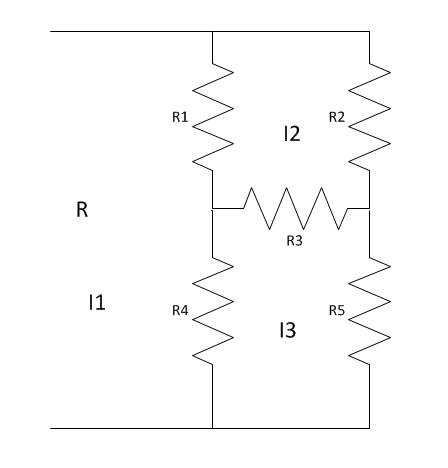
Of course, one way to do it is to split it into series and parallel circuits and apply Kirchhoff's law, but that seems inefficient. Is there a method by which a circuit nest can be solved (finding the voltage and current at each resistor) efficiently (suitable for a computer simulation, perhaps)? (Of course, any approach would be based on Kirchoff's laws, but they can be rearranged to be more efficient for this task.) I am thinking it would involve finding relative voltages at every node, instead of voltage differences at each resistor.
What should I do?


